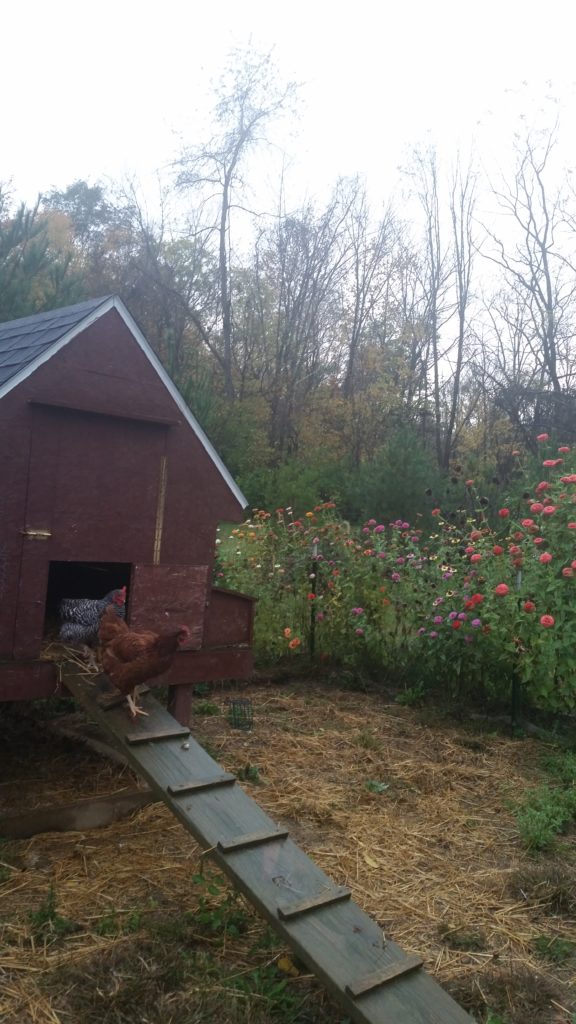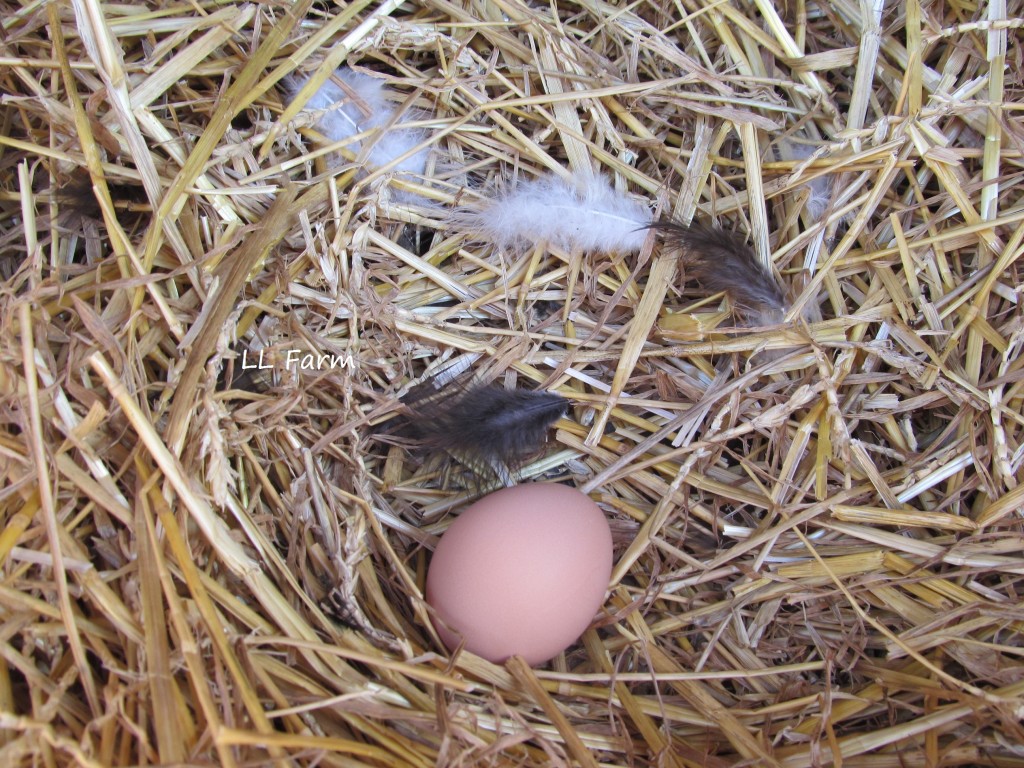
Daylight hours decrease and cooler weather approaches as autumn settles in all around us. As you can see in this picture, some of the trees are bare, and so are the nesting boxes. Fall is a common time for molting chickens and fewer (or no) eggs. Even other chicken owners that usually sell eggs have covered up their ‘fresh eggs for sale’ signs. So what’s going on? What is this molting business all about? And, when will I have fresh eggs again?
Molting is common for chickens. Assuming that the chicken is healthy, molting is a natural process of losing old feathers and replacing them with new ones. It’s a lot of work! The energy that is usually used to produce eggs is now being used to replace feathers. So, yep you guessed it…fewer or no eggs for a while.

Although molting is natural, how each chicken molts can vary. Some may have a soft molt, losing only a few feathers. Others may have a hard molt, losing lots of feathers. The chicken can look rather scraggly, and leave the coop and run looking like a pillow fight broke out.
The time frame can also vary, according to each chicken. A couple of weeks or a couple of months may be needed to finish a molt cycle and get back into a regular routine of laying eggs.
It’s worth it! Molting during the fall and growing new feathers will ultimately ensure that the chickens keep warm for the upcoming cold, winter months. So while they are hard at work, I will succumb to buying eggs from the grocery store (gasp).












